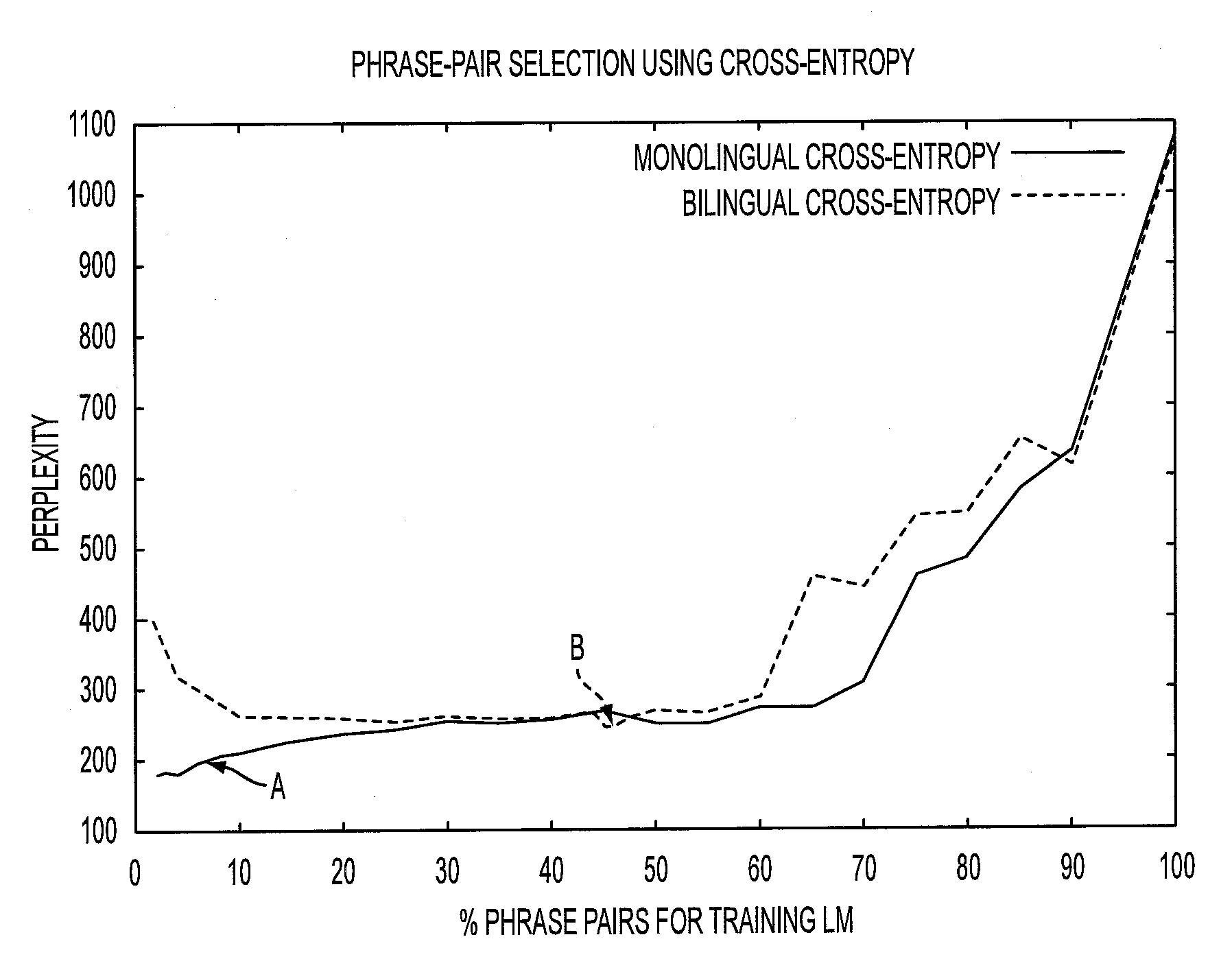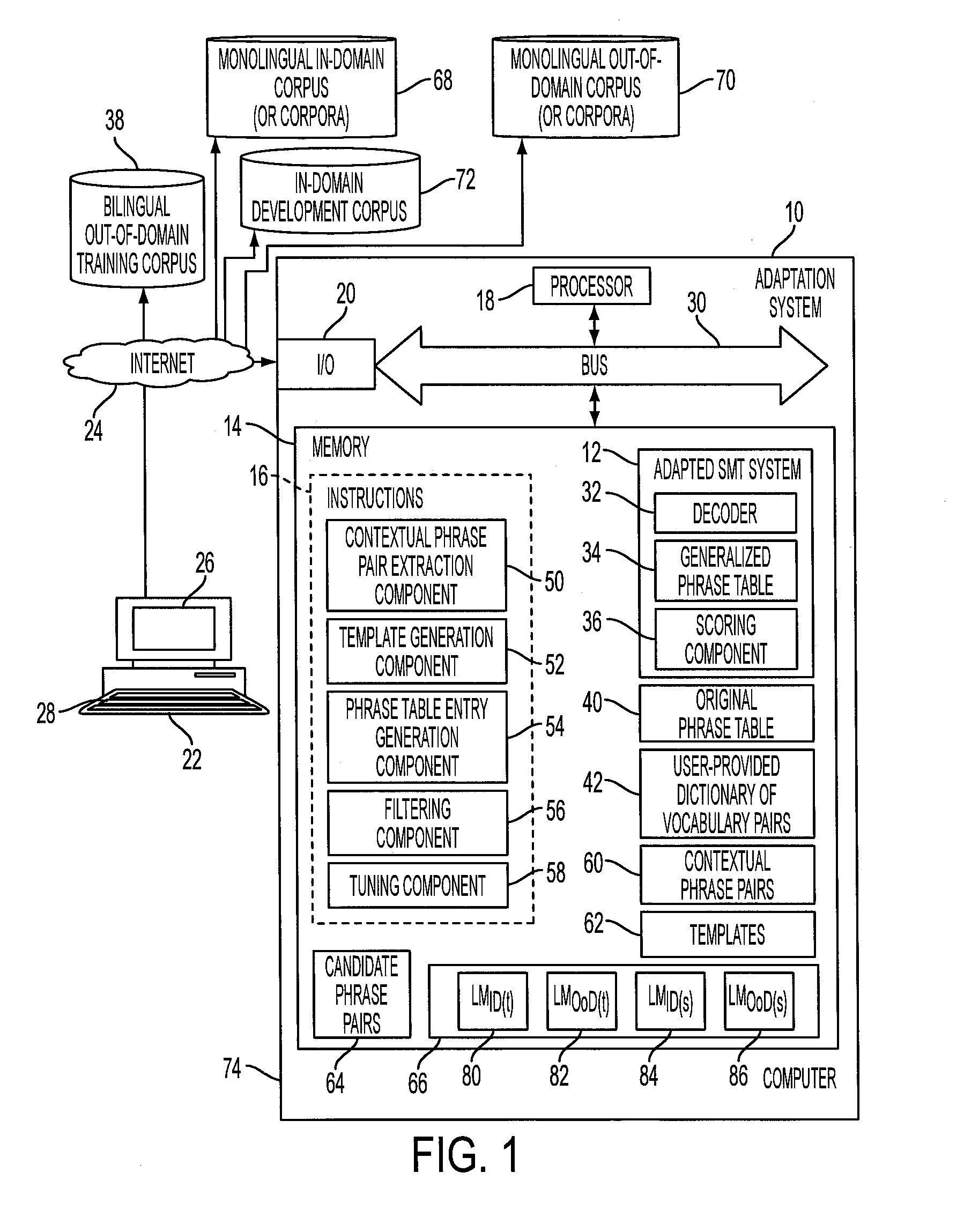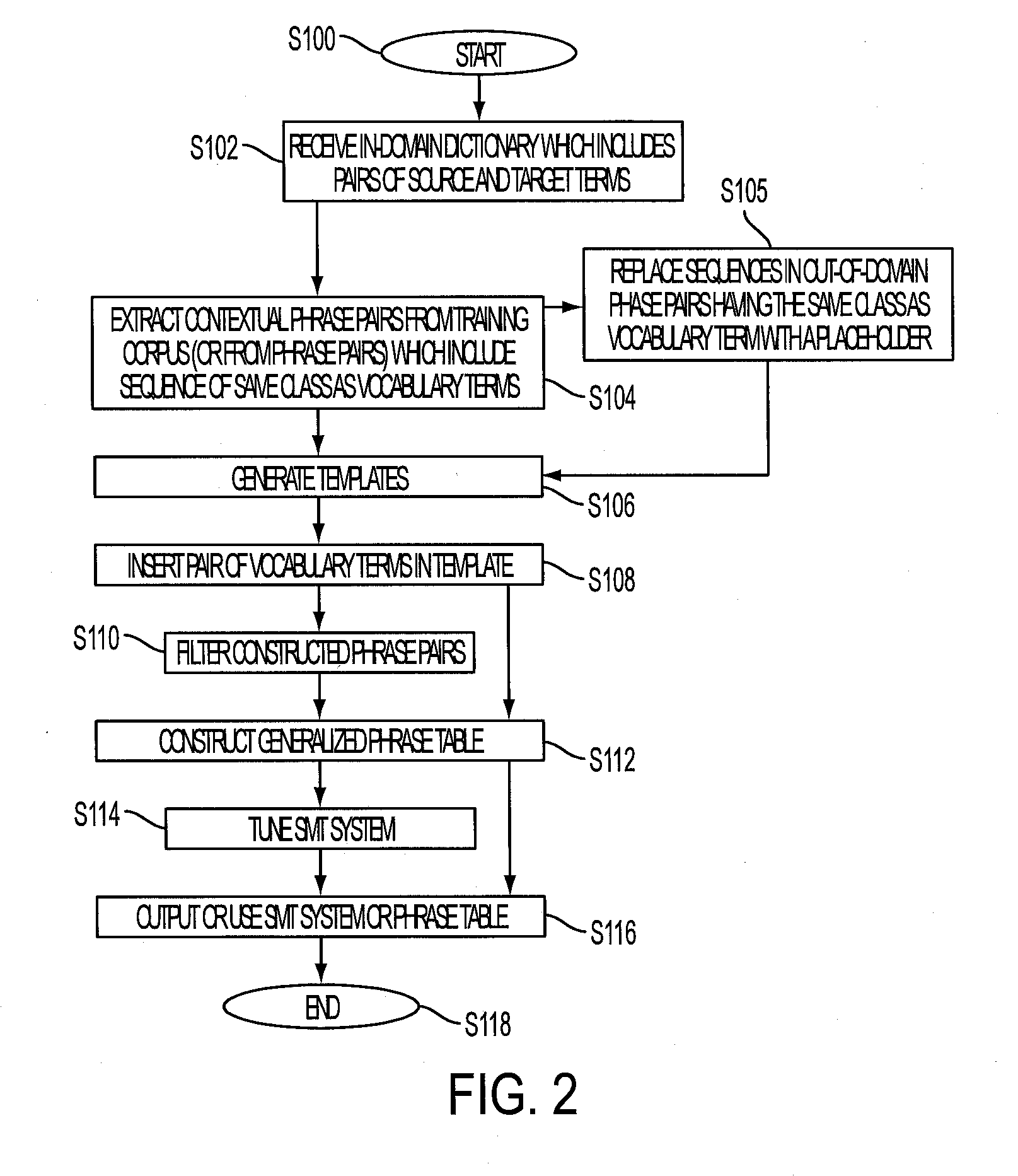Terminological adaptation of statistical machine translation system through automatic generation of phrasal contexts for bilingual terms
a statistical machine translation and automatic generation technology, applied in the field of machine translation, can solve the problems of not providing as good performance outside the domain, not making effective use of phrase-based smt, and adding individual words without their phrasal contexts, etc., and achieve the effect of a system limited to unigram-unigram pairs and poor performance of one containing
- Summary
- Abstract
- Description
- Claims
- Application Information
AI Technical Summary
Benefits of technology
Problems solved by technology
Method used
Image
Examples
example
[0115]The generation approach aims to add context to the new data added to the translation model (TM). This added context is very useful for SMT. To demonstrate this, several setups for the generation process are considered. These setups concern the addition of specific terminology associated with country names, with particular focus on the English-to-French translation of the country name “Germany.”
[0116]1. Baseline Method (baseline): First, all the translation hypotheses for “Germany”—“Allemagne” are deleted from the translation model phrase table 40. In particular, all the phrase pairs which contain these two words are deleted. This is done during the training and before the final estimation of the TM. This process will not penalize the TM feature estimation process and especially any smoothing of the features in the TM.
[0117]2. Adding unknown words as unigrams (uniqrams): In this setup, the translation of “Germany” by “Allemagne” is added to the baseline phrase table as a single...
PUM
 Login to View More
Login to View More Abstract
Description
Claims
Application Information
 Login to View More
Login to View More - R&D
- Intellectual Property
- Life Sciences
- Materials
- Tech Scout
- Unparalleled Data Quality
- Higher Quality Content
- 60% Fewer Hallucinations
Browse by: Latest US Patents, China's latest patents, Technical Efficacy Thesaurus, Application Domain, Technology Topic, Popular Technical Reports.
© 2025 PatSnap. All rights reserved.Legal|Privacy policy|Modern Slavery Act Transparency Statement|Sitemap|About US| Contact US: help@patsnap.com



